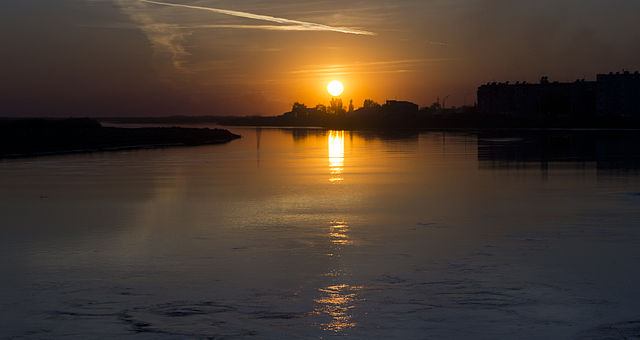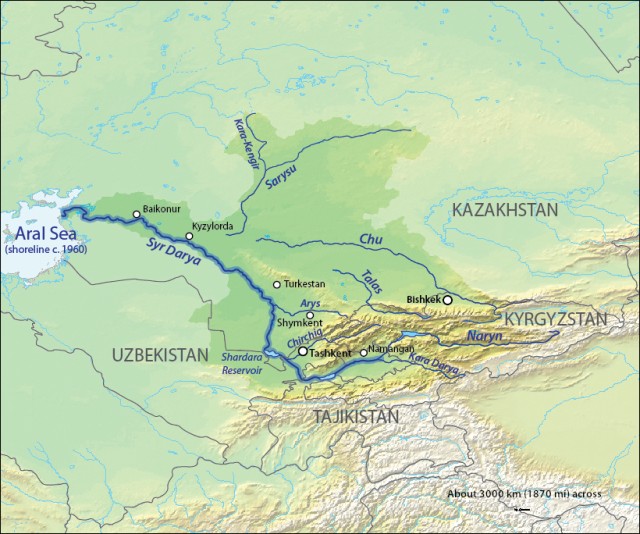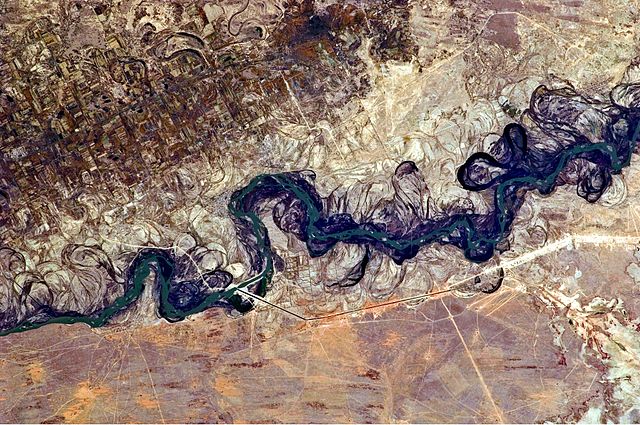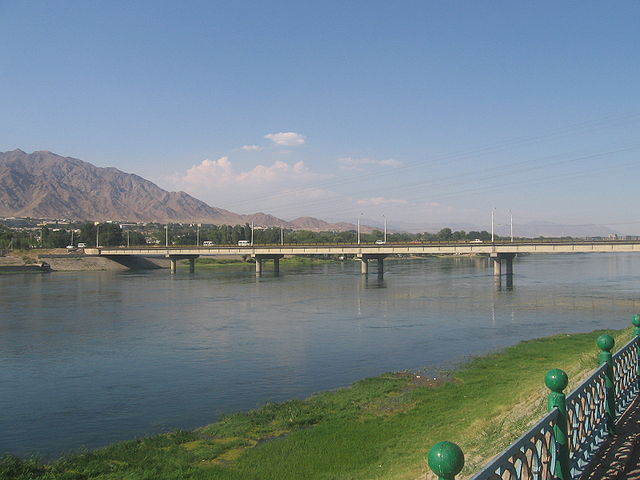
| SYR DARYA
Syr Darya at Kyzylorda, Kazakhstan
Map of the watershed of Syr Darya. Aral Sea boundaries are c. 1960 Location
:
Source
: Confluence of Naryn and Kara Darya
Mouth
: North Aral Sea
Basin
features :
Official name : Lesser Aral Sea and Delta of the Syrdarya River
The Syr Darya historically known as the Jaxartes, is a river in Central Asia. The name, a borrowing from the Persian language, literally means Syr Sea or Syr River, and sometimes it is referred to in this way. It originates in the Tian Shan Mountains in Kyrgyzstan and eastern Uzbekistan and flows for 2,256.25 kilometres (1,401.97 mi) west and north-west through Uzbekistan and southern Kazakhstan to the northern remnants of the Aral Sea. It is the northern and eastern of the two main rivers in the endorrheic basin of the Aral Sea, the other being the Amu Darya (Jayhun). In the Soviet era, extensive irrigation projects were constructed around both rivers, diverting their water into farmland and causing, during the post-Soviet era, the virtual disappearance of the Aral Sea, once the world's fourth-largest lake. The point at which the river flows from Tajikistan into Uzbekistan is, at 300 m (980 ft) above sea level, the lowest elevation in Tajikistan.
History :
Astronaut photograph of the Syr Darya River floodplain
Syr Darya River at Khujand When the Macedonian army of Alexander the Great reached the Jaxartes in 329 BCE, after travelling through Bactria and Sogdia without encountering any opposition, they met with the first instances of native resistance to their presence. Alexander was wounded in the fighting that ensued and the native tribes took to massacring the Macedonian garrisons stationed in their towns. As the revolt against Alexander intensified it spread through Sogdia, plunging it into two years of warfare, the intensity of which surpassed any other conflict of the Anabasis Alexandri.
On the shores of the Syr Darya Alexander placed a garrison in the City of Cyrus (Cyropolis in Greek), which he then renamed after himself Alexandria Eschate—"the farthest Alexandria"—in 329 BCE. For most of its history since at least the Muslim conquest of Central Asia in the 7th to 8th centuries CE, the name of this city (in present-day Tajikistan) has been Khujand.
In the mid-19th century, during the Russian conquest of Turkestan, the Russian Empire introduced steam navigation to the Syr Darya, with an important river port at Kazalinsk (Kazaly) from 1847 to 1882, when service ceased.
During the Soviet era, a resource-sharing system was instituted in which Kyrgyzstan and Tajikistan shared water originating from the Amu Darya and Syr Darya rivers with Kazakhstan, Turkmenistan, and Uzbekistan in summer. In return, Kyrgyzstan and Tajikistan received Kazakh, Turkmen, and Uzbek coal, gas, and electricity in winter. After the 1991 fall of the Soviet Union this system disintegrated and the Central Asian nations have failed to reinstate it. Inadequate infrastructure, poor water-management, and outdated irrigation methods all exacerbate the issue.
Geography
:
Along its course, the Syr Darya irrigates the most productive cotton-growing region in the whole of Central Asia, together with the towns of Kokand, Khujand, Kyzylorda and Turkestan.
Various local governments throughout history have built and maintained an extensive system of canals. These canals are of central importance in this arid region. Many fell into disuse in the 17th and early 18th century, but the Khanate of Kokand rebuilt many in the 19th century, primarily along the Upper and Middle Syr Darya.
Name
:
The earliest recorded name was Jaxartes or Iaxartes in Ancient Greek, consist of two morpheme Iaxa and artes, found in several sources, including those relating to Alexander the Great. The Greek name hearkens back to the Old Persian name Yakhsh Art ("True Pearl"), perhaps a reference to the color of its glacially-fed water. More evidence for the Persian etymology comes from the river's Turkic name up to the time of the Arab conquest, the Yinçü, or "Pearl river", Tang Chinese also recorded this name as Yaosha River and later Ye River.
Following the Muslim conquest, the river appears in the sources uniformly as the Seyhun, one of the four rivers flowing from the Paradise (Jannah in Arabic).
The current local name of the river, Syr (Sïr), does not appear before the 16th century. In the 17th century, Abu al-Ghazi Bahadur Khan, historian and ruler of Khiva, called the Aral Sea the "Sea of Sïr," or Sïr Tengizi.
Ecological
damage :
The uranium concentration of the stream water is increased in Tajikistan with values of 43 µg/l and 12 µg/l; the WHO guideline value for drinking water of 30 µg/l is partly exceeded. The main input of uranium occurs upstream in Uzbekistan and Kyrgyzstan.
Source :
https://en.wikipedia.org/ |



